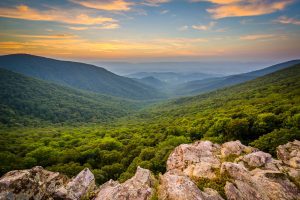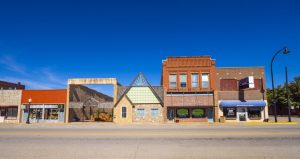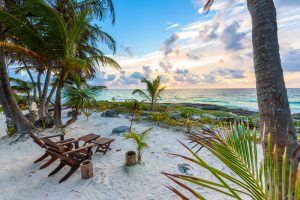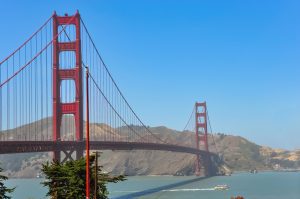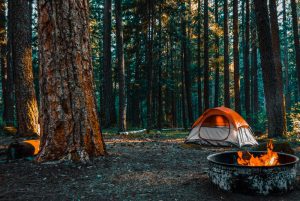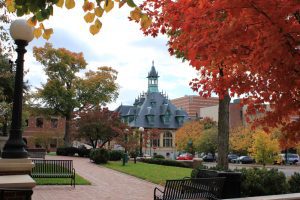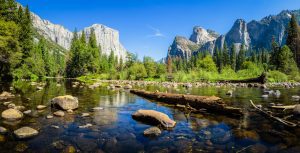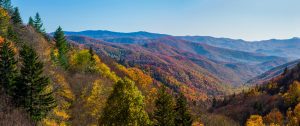North America is home to some of the tallest mountains in the world. From Alaska and Canada all the way down to Mexico, these staggering peaks have piqued the interest of climbers, geographers, and explorers for centuries.
Whether you’re hoping to summit one of these massive pinnacles or just interested in learning more about them, continue reading to discover the 30 highest mountains in North America.
Table of Contents
The Highest Mountains in North America
| Number | Mountain | Height (in feet) | Height (in meters) |
|---|---|---|---|
| 1 | Denali | 20,320 | 6,194 |
| 2 | Mount Logan | 19,545 | 5,959 |
| 3 | Pico de Orizaba | 18,491 | 5,636 |
| 4 | Mount Saint Elias | 18,008 | 5,489 |
| 5 | Volcán Popocatépetl | 17,802 | 5,426 |
| 6 | Mount Foraker | 17,400 | 5,304 |
| 7 | Mount Lucania | 17,257 | 5,260 |
| 8 | Volcán Iztaccíhuatl | 17,160 | 5,230 |
| 9 | King Peak | 16,972 | 5,173 |
| 10 | Mount Bona | 16,500 | 5,029 |
| 11 | Mount Steele | 16,404 | 5,000 |
| 12 | Mount Blackburn | 16,390 | 4,996 |
| 13 | Mount Sandford | 16,237 | 4,949 |
| 14 | Mount Wood | 15,879 | 4,840 |
| 15 | Mount Vancouver | 15,787 | 4,812 |
| 16 | Nevado de Toluca | 15,354 | 4,680 |
| 17 | Mount Fairweather | 15,325 | 4,671 |
| 18 | Mount Hubbard | 14,950 | 4,557 |
| 19 | Mount Bear | 14,831 | 4,520 |
| 20 | Mount Walsh | 14,783 | 4,506 |
| 21 | Mount Hunter | 14,573 | 4,442 |
| 22 | Volcán La Malinche | 14,501 | 4,420 |
| 23 | Mount Whitney | 14,495 | 4,418 |
| 24 | University Peak | 14,470 | 4,410 |
| 25 | Mount Elbert | 14,433 | 4,399 |
| 26 | Mount Massive | 14,421 | 4,395 |
| 27 | Mount Harvard | 14,420 | 4,395 |
| 28 | Mount Rainier | 14,411 | 4,392 |
| 29 | Blanca Peak | 14,345 | 4,372 |
| 30 | Uncompahgre Peak | 14,314 | 4,363 |
1. Denali: 6,194 meters (20,320 ft) – Alaska, USA
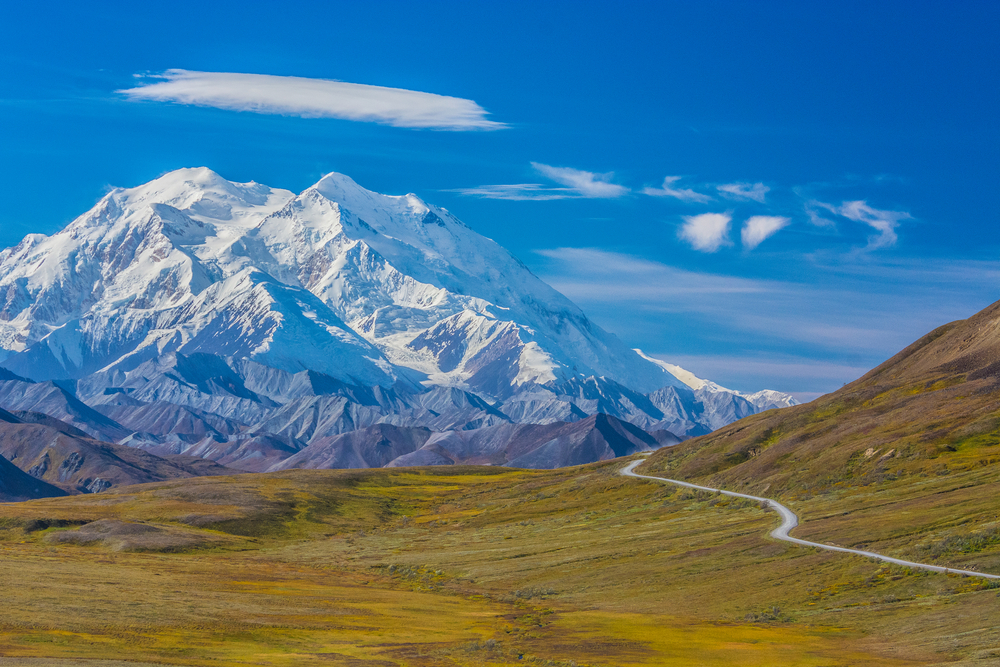
Not only is Denali the highest mountain in North America, but it’s also the third highest mountain in the entire world. The imposing peak of Denali is best seen from the national park by the same name, located in south-central Alaska.
Denali translates to “the high one” in the native Athabaskan language. But North America’s tallest peak wasn’t always named so. Until 1980 Denali was known as Mount McKinley, named after a Republican presidential nominee.
While the name has changed, the draw to Denali has not.
Since it was first summited in 1913, climbers from around the world have traveled to Denali National Park for their chance to reach the top of the highest mountain in North America.
2. Mount Logan: 5,959 meters (19,545 ft) – Yukon, Canada
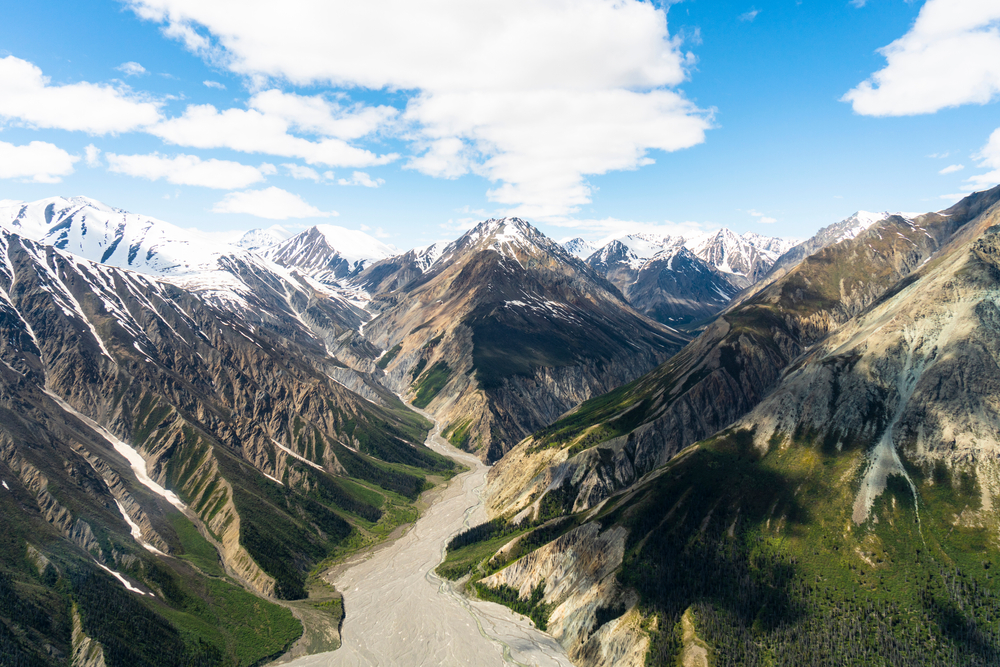
Mount Logan is the second-highest mountain in North America and the tallest peak in Canada.
While it may not be the highest mountain in the world or even in North America, it does hold the title for the largest base circumference of any mountain on earth.
It is also the record holder for the coldest place outside of Antarctica, with its coldest recorded temperature measuring -77.5°C (-106.6°F) back in 1991.
The freezing temperatures should be enough to keep climbers well away, but the location also proves difficult to access.
Mount Logan is located inside of the Kluane National Park Reserve in the southwest corner of the Yukon Territory. The peak is located far from any road or trail, so even catching sight of Mount Logan is no easy feat.
3. Pico de Orizaba: 5,636 meters (18,491 ft) – Veracruz-Puebla, México
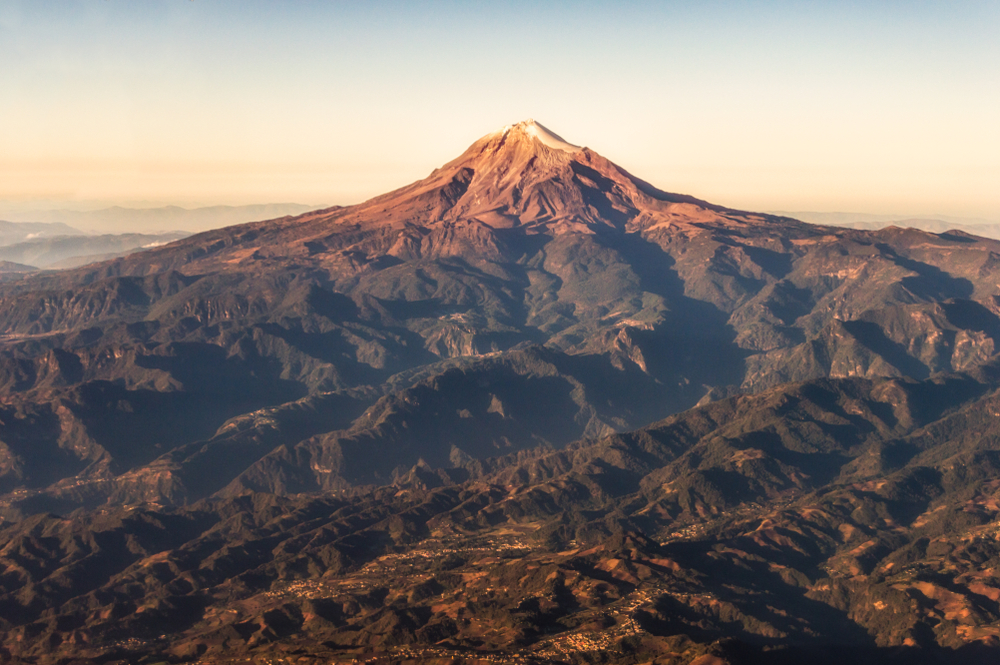
You’ll have to skip across all of the continental United States to find the third highest mountain in North America.
Pico de Orizaba is located along the border of the Veracruz and Puebla states in south-central Mexico and is the country’s tallest peak.
Also known as Citlaltepétl, Pico de Orizaba is actually a stratovolcano. Luckily, the last eruption happened back in the 19th century and the volcano has since been deemed inactive.
The volcano is topped with a glacier, and the iconic peak is extremely popular with climbers. If you do decide to ascend this legendary mountain, be sure to catch a sunrise from the top.
This is said to be the most beautiful time at the summit thanks to the long shadows the mountain casts along the flat plains below.
4. Mount Saint Elias: 5,489 meters (18,008 ft) – Alaska/Yukon border
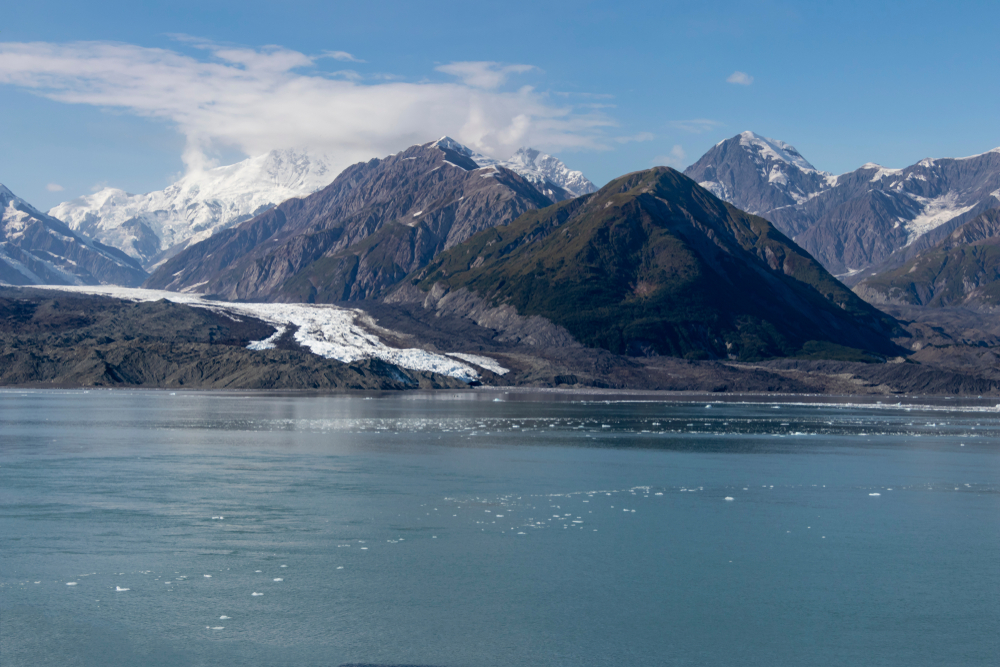
Just south of Canada’s highest peak (Mount Logan), you’ll find North America’s fourth highest mountain.
Mount Saint Elias stands sentinel along the border of Alaska and Yukon and is the second-highest mountain in both the United States and Canada.
On the US side, Mount Saint Elias is part of the massive Wrangell-Saint Elias National Park and Preserve, which is the largest national park in the country.
Like so many other of the world’s highest peaks, Mount Saint Elias has seen its fair share of climbers ascending to its towering summit.
The first climbing expedition dates all the way back to 1897 when a group of Italian climbers made their way to the top of the mountain.
5. Volcán Popocatépetl: 5,426 meters (17,802 ft) – Southeast of México City, México
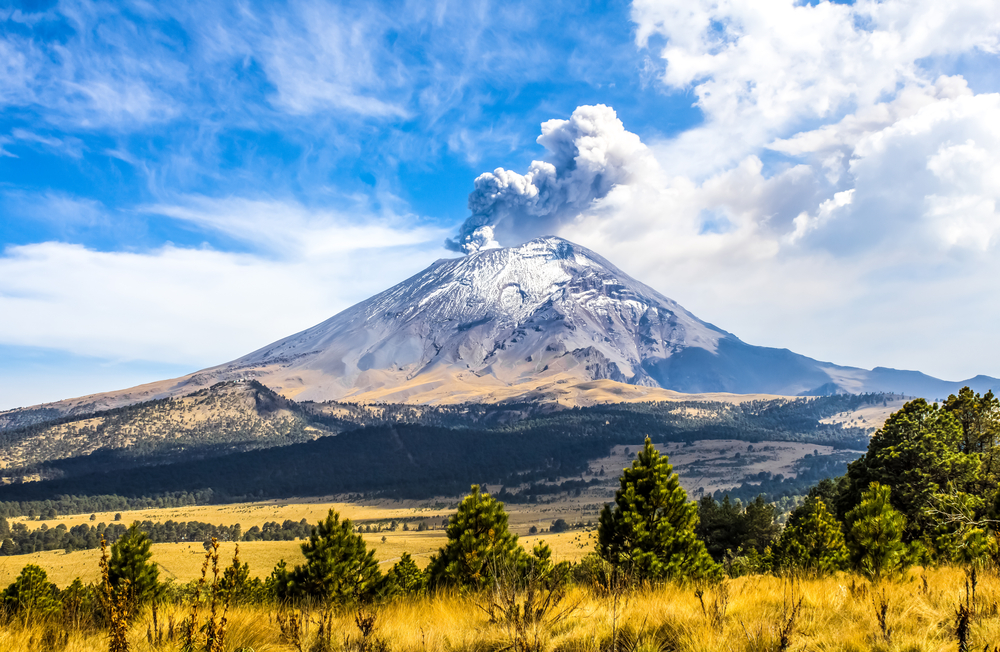
Coming in at number five of the highest mountains in North America is the formidable Popocatépetl, located just south of Mexico City, Mexico.
More than just a mountain, Popocatépetl is actually an active volcano and has had 15 major eruptions since 1519 when it was discovered by Spanish explorers.
The Aztecs knew of the volcano long before the Spanish arrived at their shores, and the name Popocatépetl is a native word that loosely translates into “Smoking Mountain”.
Today the volcano is a prominent feature of the Parque Nacional Iztaccíhuatl-Popocatépetl in which it is located.
Popocatépetl spent many years in dormancy, and during this time it was not uncommon to see climbers ascending its slopes. In 1994 it became active again, and in 2000 the volcano had its biggest eruption in over 1,200 years.
6. Mount Foraker: 5,304 meters (17,400 ft) – Alaska, USA
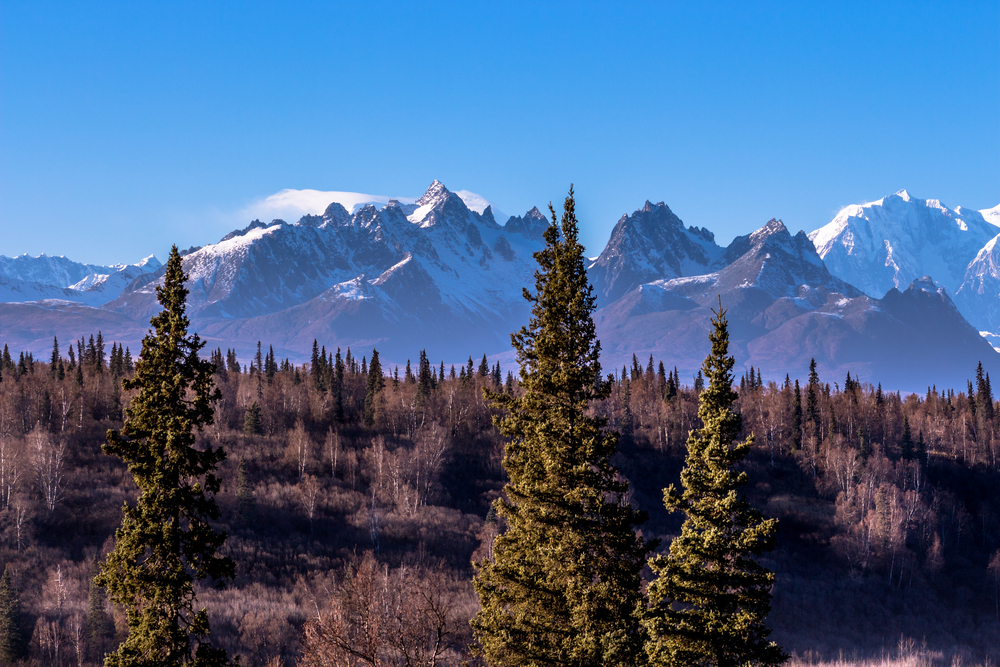
Situated next to Denali in the Alaskan Range, Mount Foraker is the sixth highest mountain in North America.
The mountain is named for a US senator, but the native names Sultana (the Woman) and Menlale (Denali’s Wife) carry a bit more meaning.
Like Denali, Mount Foraker is a popular place for climbing. The summit was first ascended in 1934, and since then climbers have been testing their skills on this route and on more challenging ones.
The infamous Foraker’s Infinite Spur is one of the most difficult routes in the entire Alaskan Range, and few have successfully ascended it.
7. Mount Lucania: 5,260 meters (17,257 ft) – Yukon, Canada
Mount Lucania is the seventh highest mountain in North America and is located in the Mount Saint Elias Range of Canada’s Yukon Territory.
Lucania sits about 65 km (40.4 miles) north of Mount Logan, and just like its towering neighbor it is hidden away deep in the mountain range and cannot be seen from the road.
Not only is it hard to reach, but the cold temperatures, stormy weather, and significant snowfall make Mount Lucania a real doozy to climb. While it is difficult, it is not impossible.
The first ascent of this impenetrable mountain took place in 1937, and brave climbers continue to tackle Mount Lucania to this day.
8. Volcán Iztaccíhuatl: 5,230 meters (17,160 ft) – Puebla-Estado de México, México
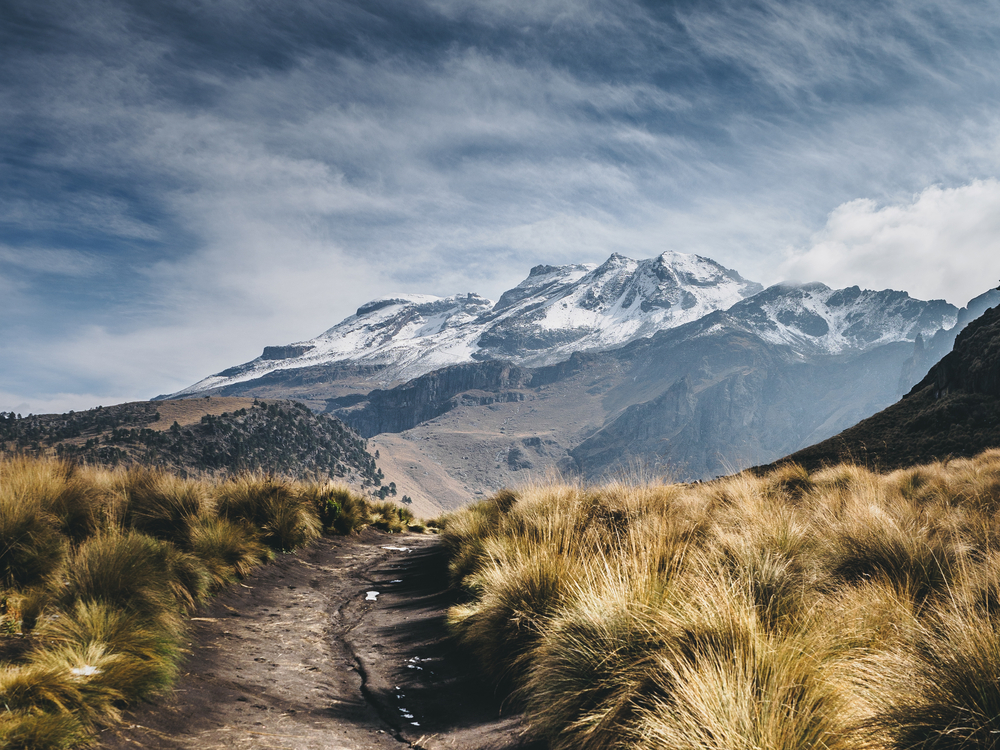
Mexico’s third highest mountain is the eighth largest in the world. Volcán Iztaccíhuatl is a dormant volcano located inside of the Parque Nacional Iztaccíhuatl-Popocatépetl near Mexico City.
Iztaccíhuatl is a native word that translates into “White Woman”. When viewing the mountain horizontally from the east or west, you can almost see the outline of a lady, including her hair, head, chest, belly, knees, and feet.
Due to its relatively easy routes, Iztaccíhuatl is one of the most popular climbing routes in North America. Records show that it was first summited in 1889, but many believe that the local natives reached the top much earlier.
9. King Peak: 5,173 meters, (16,972 ft) – Yukon, Canada
Looming large in the Saint Elias range, King Peak is the ninth highest mountain in North America and the fourth highest mountain in Canada. This peak is located just west of Mount Logan in the Yukon Territory.
King Peak was first summitted by students of the University of Alaska in 1952, but few have followed in their footsteps. Like so many other peaks in the Saint Elias range, summiting King Peak is technical, difficult, and downright dangerous.
Snowstorms, rock towers, and icy crests are almost a guarantee. Add that to a remote location in some seriously rugged territory and it’s no wonder why more people haven’t made it to the top of King Peak.
10. Mount Bona: 5,029 meters (16,500 ft) – Alaska, USA
North America’s tenth highest mountain is located in eastern Alaska. Mount Bona is also the United States’ fifth highest mountain and the highest volcano in the country.
This stratovolcano is covered in ice, and when that ice melts it flows into Canada’s Yukon Territory where it contributes to the Russell Glacier complex.
It is also the source for the Kultlan Glacier and other small glaciers in the surrounding area. While not entirely unheard of, climbing Mount Bona is not particularly popular.
This is mostly due to the technical challenges and the fact that the mountain is covered in snow and ice year-round. The first ascent of this towering peak occurred in 1930.
11. Mount Steele: 5,000 meters (16,404 ft) – Yukon, Canada
Mount Steele is located in the Kluane National Park and is part of the Saint Elias Range.
The exact elevation is a bit of a mystery, but it is thought to be around 5,000 meters (or 16,404 feet), making it the 11th highest mountain in North America.
Just like most of the other towering summits in Canada’s Yukon Territory, Mount Steele has a reputation for bad weather.
Record-breaking avalanches and landslides occur every few years, further adding to the danger of ascending this mountain. Reaching the summit is not impossible, however, and it was first achieved back in 1935.
That being said, the unpredictable weather, icy conditions, and technical aspects of Mount Steele make reaching the summit extremely difficult even for the most experienced climbers.
12. Mount Blackburn: 4,996 meters (16,390 ft) – Alaska, USA
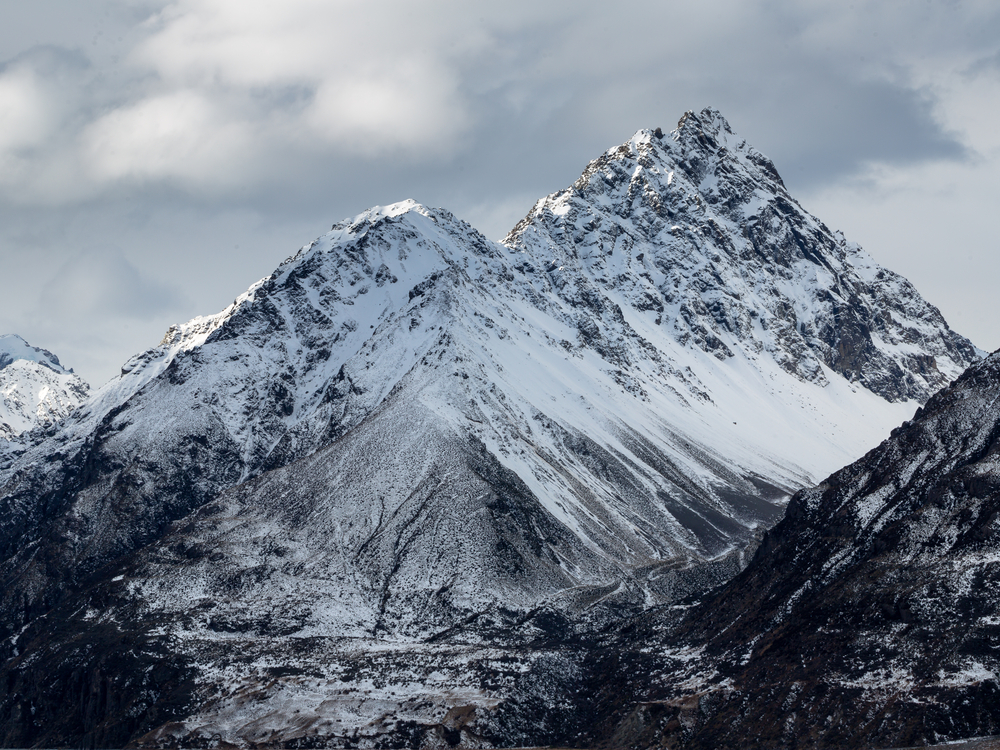
What was once an active shield volcano is now just a towering mountain peak, though it is the 12th highest mountain in North America.
Mount Blackburn is located in Alaska’s Wrangell-Saint Elias National Park and Preserve and takes the prize for the highest peak in the Wrangell Mountain range.
It is also the second-highest volcano in the country, even though it has long since been deemed extinct.
This towering peak is the main source for the Kennicott Glacier, and it also contributes to the Nabesna Glacier and the Kuskulana Glacier.
13. Mount Sandford: 4,949 meters (16,237 ft) – Alaska, USA
Mount Sandford is so similar to Mount Blackburn that you may find yourself getting the two confused.
Both are located in the Wrangell Mountain range of Alaska, both were once active shield volcanoes, and they are almost the same height.
Almost is the keyword here, as Mount Sandford is a bit shorter than Mount Blackburn, making it the 13th highest mountain in North America and the third highest volcano in the United States.
Mount Sandford often appears to be active thanks to the rock, icefall, and vapor that occur near the summit, but the last volcanic activity here is thought to predate the historical record of the volcano which started in the 1700s.
Another similarity between Mount Sandford and Mount Blackburn is that people love to summit this volcano, though the first ascent of Mount Sandford was decades after that of Mount Blackburn in 1938.
14. Mount Wood: 4,840 meters (15,879 ft) – Yukon, Canada
Sometimes referred to as Wood Peak, Mount Wood is the 14th highest mountain in North America and the sixth-highest in Canada.
Like so many of Canada’s lofty peaks, Mount Wood is located in the Yukon Territory in the Kluane National Park and Reserve.
At this point, it should come as no surprise that summiting a mountain in the Saint Elias range is no easy feat.
While the first ascent of Mount Wood took place back in 1941, it wasn’t until 2019 that the summit of this towering peak was ascended in the winter.
Lonnie Dupre and Pascale Marceau reached the mountain top ten days before the start of spring, and Dupre was the first woman ever to reach the summit.
15. Mount Vancouver: 4,812 meters (15,787 ft) – Alaska/Yukon border

Mount Vancouver claims the title of the 15th highest mountain in North America. While most of the mountain is located in the Yukon Territory of Canada, part of its base crosses over into Alaska.
Mount Vancouver’s southern side is located in Alaska’s Glacier Bay National Park and Reserve, while its northern side sits in Canada’s Luane National Park and Reserve.
16. Nevado de Toluca: 4,680 meters (15,354 ft) – Estado de México, México
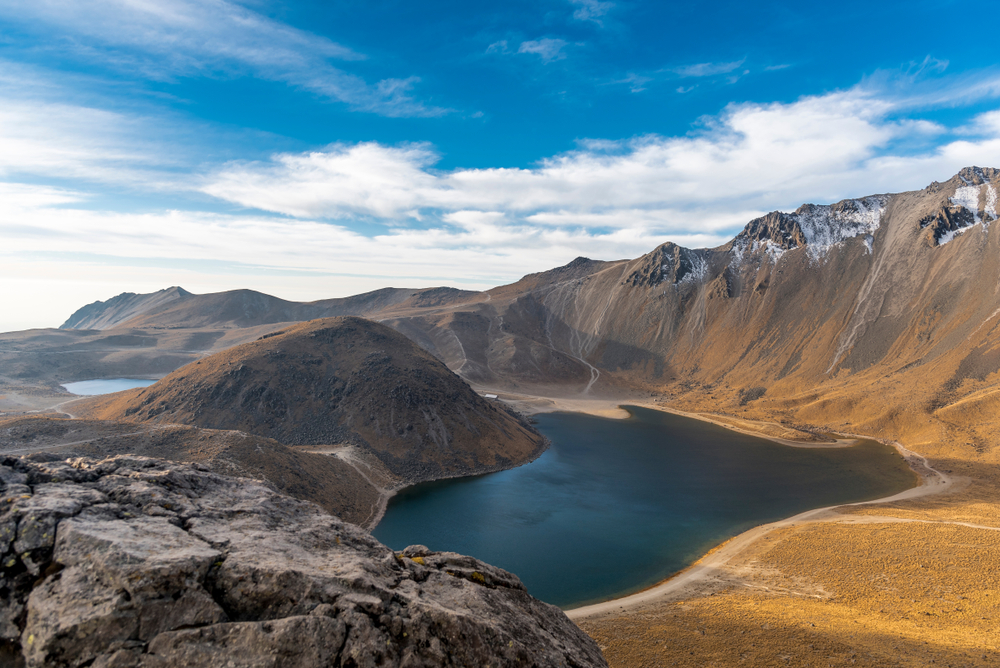
Nevado de Toluca is Mexico’s fourth highest mountain, and just like the country’s other tallest peaks, Nevado de Toluca is a volcano. Luckily, this one has not erupted in over 10,000 years.
Its location to the west of Mexico City means that Nevado de Toluca often goes overlooked, as many head straight for the country’s higher peaks to the south.
However, those who do choose to visit are rewarded with incredible scenery and epic climbing opportunities.
The volcano is home to two beautiful crater lakes, and if you don’t feel like climbing the entire mountain there are some great hiking trails located around the water.
If you do want to attempt the summit, this mountain is less crowded than some of Mexico’s other highest peaks.
17. Mount Fairweather: 4,671 meters (15,325 feet) – Alaska/British Columbia border
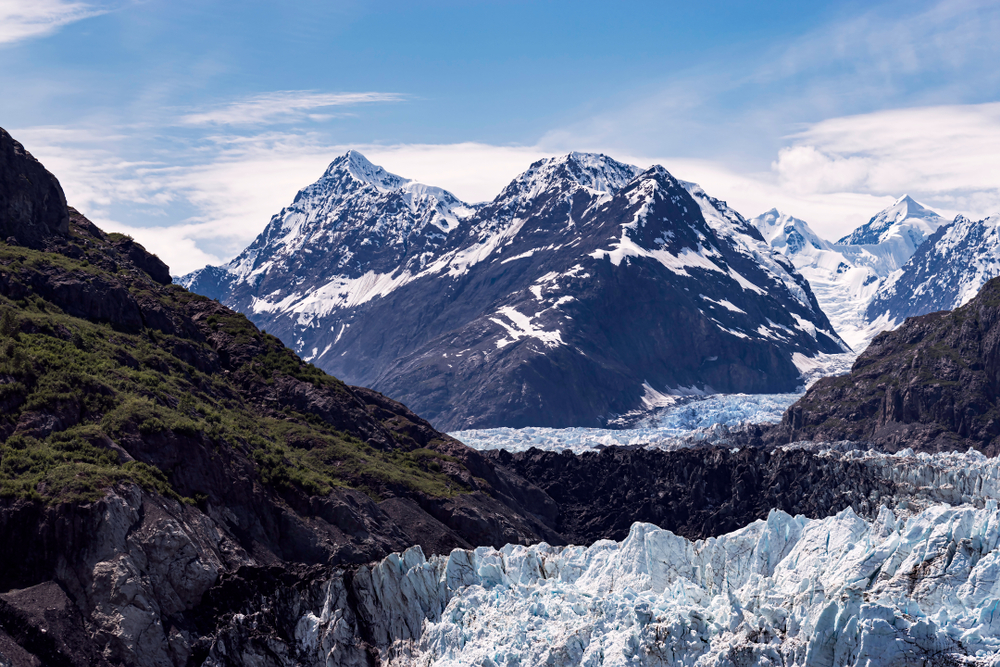
North America’s 17th highest peak can be found along the border of Alaska and British Columbia.
Tucked into the scenic Glacier Bay National Park and Reserve, Mount Fairweather’s snow-capped peaks are the highest in the British Columbia Territory.
But it’s not just the towering mountains that draw people to this area. Glacier Bay is much loved for its wild beauty and tidewater glaciers.
Millions of visitors visit the national park each year, but the indigenous natives have called these foothills home for thousands of years, living off the glacial water and abundance of wildlife.
18. Mount Hubbard: 4,557 meters (14,950 feet) – Alaska/Yukon border
Another mountain that straddles the border of Alaska and Canada’s Yukon Territory is Mount Hubbard. This tall peak is the 18th highest mountain in North America and is part of the Saint Elias Range.
On the Canadian side, Mount Hubbard is part of the Kluane National Park and Reserve, while on the American side it is part of the Wrangell-Saint Elias National Park and Preserve.
Unlike some of the other mountains in this area, summiting the eastern side of Mount Hubbard takes no technical skills. That being said, it does take some bravery and of course, plenty of warm clothing!
19. Mount Bear: 4,520 meters (14,831 feet) – Alaska, USA
Stick around Wrangell-Saint Elias National Park and you’ll find another one of North America’s highest mountains.
Mount Bear takes 19th place in terms of height, and while the jagged peaks may seem as though they would entice climbers looking for a challenge, this mountain is often overlooked.
With taller mountains like Logan, Bona, and Luciana in such close proximity, Mount Bear is rarely climbed.
Although it is less popular, the mountain is still a critical part of the landscape in Alaska and is a big contributor to the Barnard and Klutlan Glacier complexes.
20. Mount Walsh: 4,506 meters (14,783 feet) – Yukon, Canada
Situated in the midst of some of Canada’s other tallest peaks, Mount Walsh is another formidable peak in North America.
It is located in Yukon’s Kluane National Park and Reserve and is in good company near the towering Mount Steele and other notable peaks in the Saint Elias Mountain Range.
21. Mount Hunter: 4,442 meters (14,573 feet) – Alaska, USA
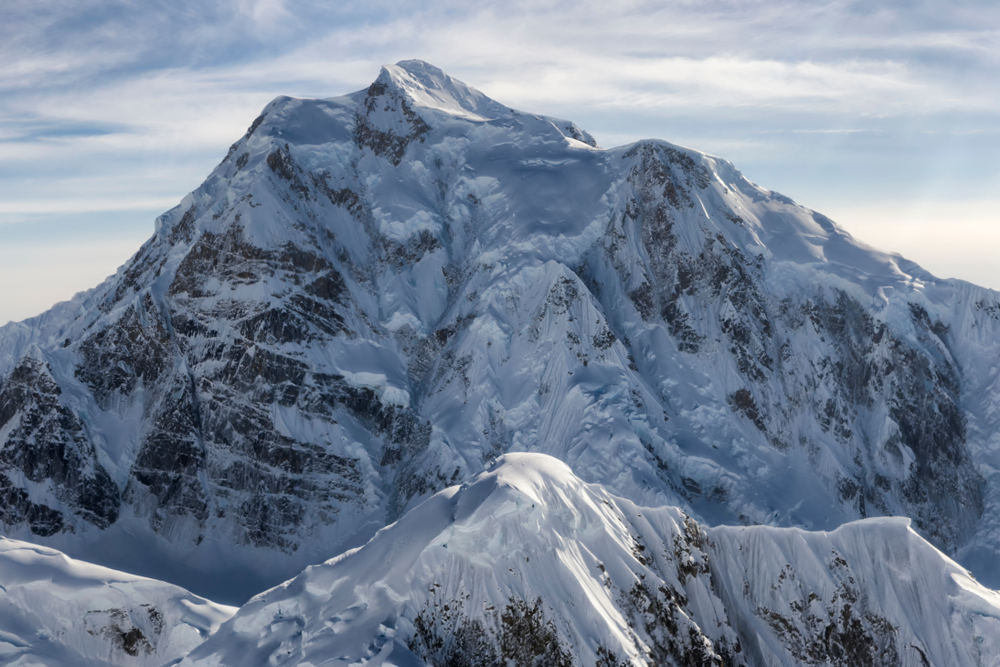
Mount Hunter is located about 130 km (80 miles) from North America’s highest mountain inside of Denali National Park. The indigenous people know Mount Hunter by a different name – Bugguya, or “Child of Denali”.
While this snow-covered peak isn’t the tallest in the continent or even the country, it is the third highest in the Alaska Range.
It is also extremely steep and technical, which makes it a more challenging climb than the towering peaks of Denali. The first ascent of Mount Hunter occurred in 1954.
22. Volcán La Malinche: 4,420 meters (14,501 feet) – Puebla-Tlaxcala, México

Not surprisingly, Mexico’s fifth highest mountain is another volcano. Volcan La Malinche, often referred to simply as La Malinche, is the 22nd highest mountain in North America.
Located east of Mexico City in the state of Tlaxcala, La Malinche is a popular training ground for mountaineers who hope to summit the higher peaks of Mexico’s more popular volcanoes.
Here, climbers can practice acclimatizing as they make their way to the top.
More of a hike than an actual climbing expedition, La Malinche is also popular amongst mountain bikers, trail runners, and nature enthusiasts.
The volcano is situated in La Malinche National Park, and even if you don’t summit this peak you can camp, hike, or rent one of the cabins along the mountainside.
23. Mount Whitney: 4,418 meters (14,495 feet) – California, USA
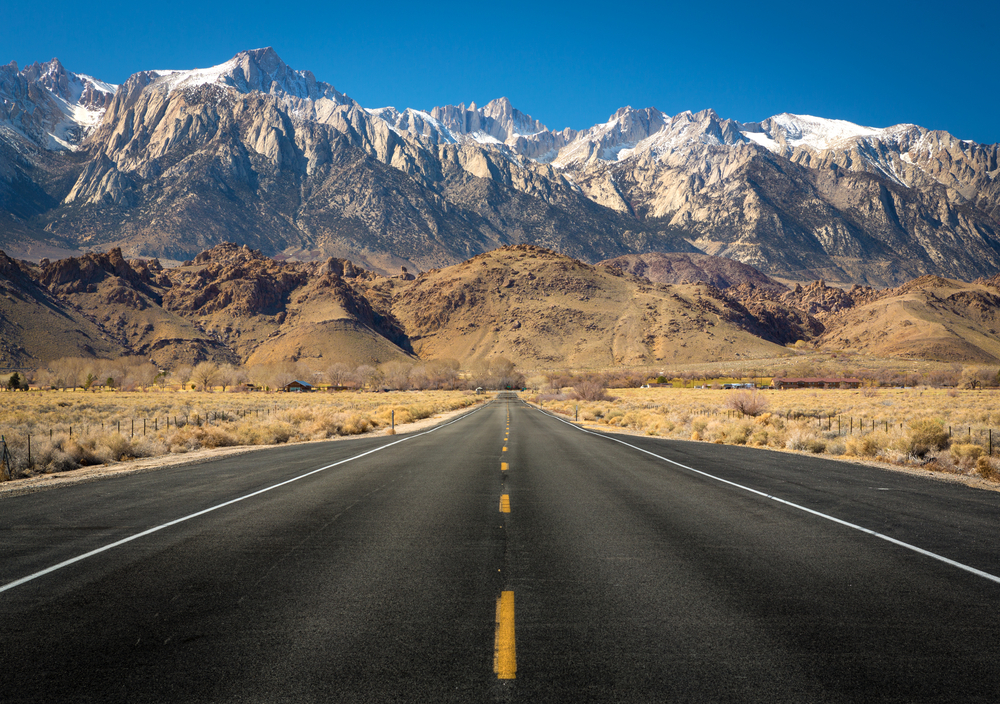
Moving down into the continental US, Mount Whitney is America’s highest mountain located outside of Alaska. It is the 23rd highest peak in North America and the crown jewel of the Sierra Nevada Mountains.
Mount Whitney is highly sought after by hikers and backpackers making their way along the Pacific Crest Trail. The easiest way to summit this peak is via the 11-mile Mount Whitney Trail.
Beware that in this case, easy means a strenuous 22-day hike. For a more laid-back hiking experience, you can head to the nearby Sequoia National Park or stretch your legs along the John Muir Trail.
24. University Peak: 4,410 meters (14,470 feet) – Alaska, USA
University Peak is located in the Saint Elias Range of eastern Alaska south of the larger and more popular Mount Bona.
While this large peak is a bit of an outlier in terms of location and acclaim, climbers who want a challenge will find a friend in University Peak.
Its steep ridges offer exciting technical challenges for avid climbers, including tricky icefall, chilly temperatures, and lots and lots of snow.
Just like most of the other peaks along the Saint Elias Range, winter storms often make University Peak impossible to summit.
If climbing this rugged route isn’t enough of a challenge, you could also try skiing down its snowy slopes, though this is only recommended for the most experienced mountaineers.
25. Mount Elbert: 4,399 meters (14,433 feet) – Colorado, USA
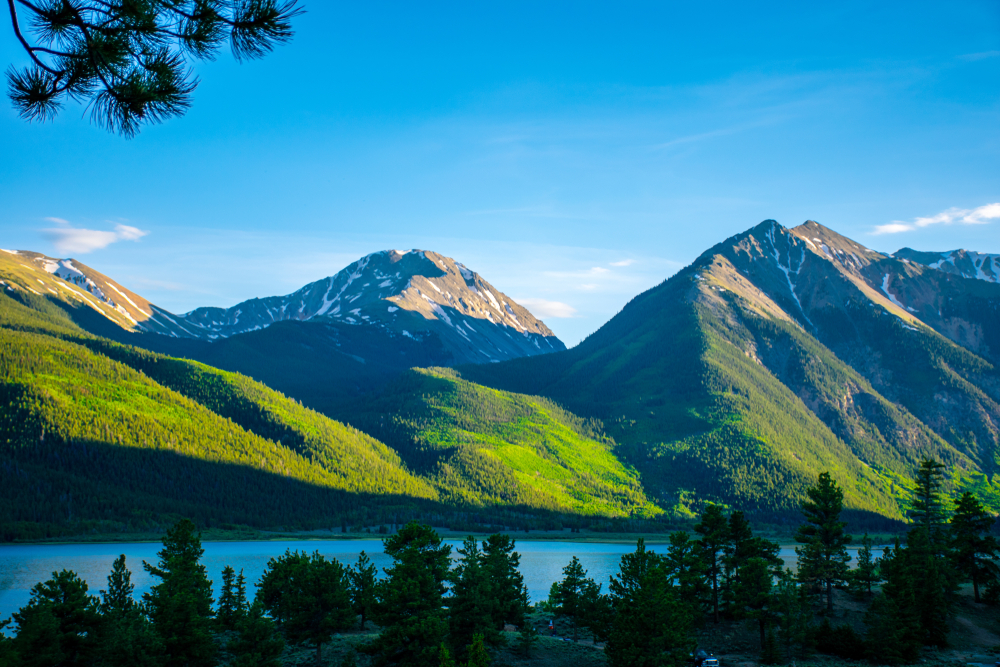
While it may not be the tallest mountain in North America, Mount Elbert is the highest peak in Colorado and the entire Rocky Mountain Range.
You would think that these traits would garner more attention, but Mount Elbert is basically unknown to those who live outside of Colorado and the mountain climbing community.
This mighty peak does deserve more recognition, as it is one of the most moderate and scenic climbs in the country.
It was first summited back in 1873 and has since been ascended thousands of times by climbers of all skill levels. A jeep has even made it to the top of Mount Elbert!
26. Mount Massive: 4,395 meters (14,421 feet) – Colorado, USA

The aptly named Mount Massive is Colorado’s second-highest peak, measuring just a few meters short of Mount Elbert’s soaring height.
Mount Massive is extremely popular amongst hikers and climbers, though it is also a seriously crowded route. This route is just challenging enough to be rewarding, and the epic views from the top add an additional incentive.
That being said, the climb is only recommended for experienced adventurers. You can expect to encounter snow and ice as you ascend, in addition to steep scrambles and inclement weather.
27. Mount Harvard: 4,395 meters (14,420 feet) – Colorado USA
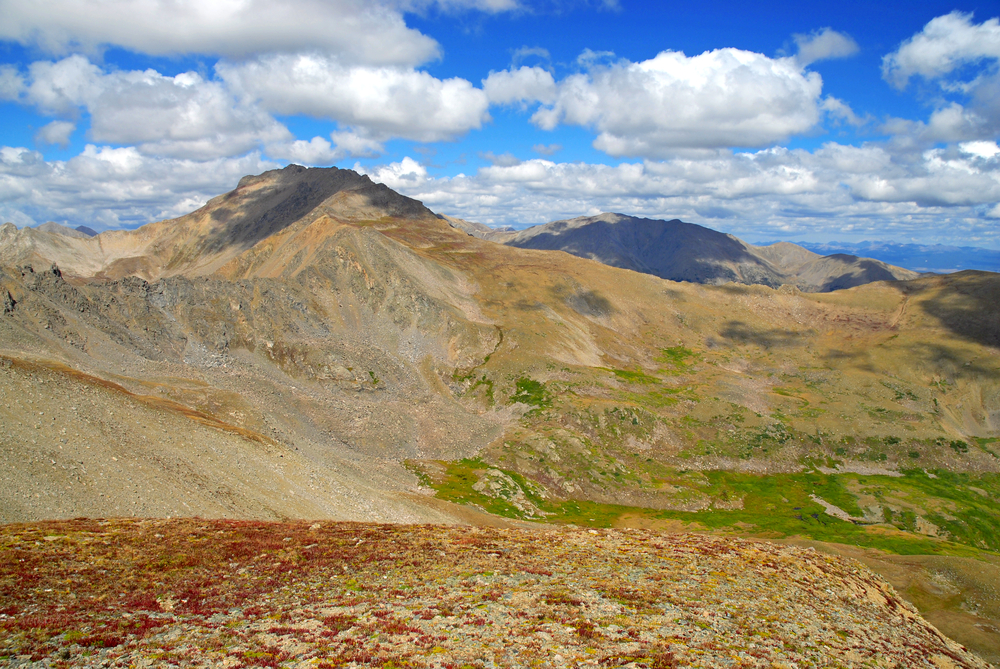
Sitting at almost the exact same height as Mount Massive, Mount Harvard is Colorado’s third highest peak (by just a hair) and North America’s 27th highest mountain.
Mount Harvard was named for the university that sponsored the first expedition to survey the mountain back in 1869.
The trail to the top of the mountain is incredibly scenic, but it is also very challenging. Multiple days and lots of experience are recommended for summiting Mount Harvard.
28. Mount Rainier: 4,392 meters (14,411 feet) – Washington, USA
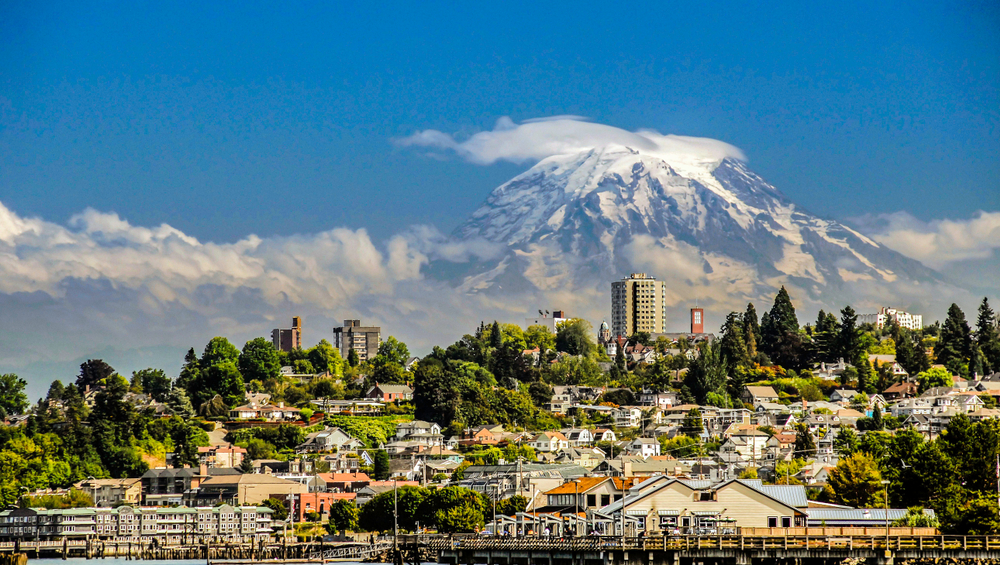
The mighty Mount Rainier is Washington’s highest peak, and it’s the 28th highest mountain in all of North America.
This snow-capped summit looms large and can be seen in the distance from Seattle and other major cities along the Puget Sound.
Mount Rainier is actually an extinct volcano, and it’s the most glaciated peak in the lower 48.
The indigenous named the mountain Tahoma, or “Great Snowy Mountain”, which is extremely fitting. The name “Rainier” comes from a British officer who never even laid eyes on the mountain, but the name has stuck.
The first ascent of Mount Rainier is thought to have taken place in 1852, though there are no records to attest to that fact.
The first recorded summit dates back to 1870, and today tens of thousands of climbers make their way to the base of Mount Rainier in hopes of making it to the top of this massive peak.
29. Blanca Peak: 4,372 meters (14,345 feet) – Colorado, USA
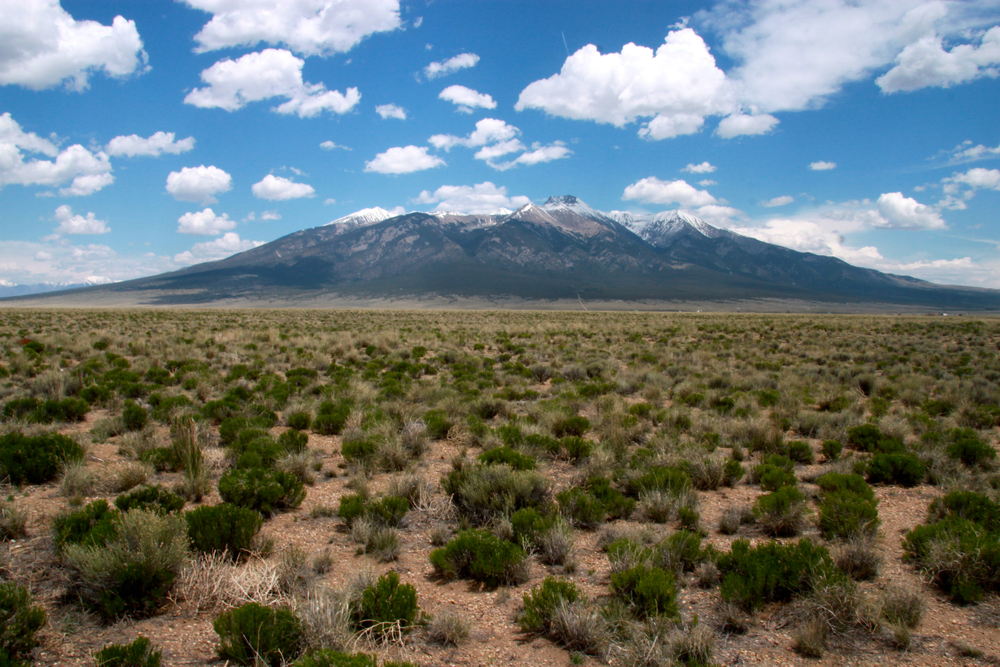
Blanca Peak is the fourth highest mountain in Colorado and the 29th highest mountain in North America.
Located in the Sangre de Cristo range, Blanca Peak is a sacred mountain to the Navajo people who refer to it as “Tsisnassjini” or “White Shell Mountain”.
The first documented ascent of Blanca Peak took place in 1874, but surveyors found a stone structure along the route, which indicates that either the Ute Indians or wandering Spaniards had stepped foot on the mountain decades before.
30. Uncompahgre Peak: 4,363 meters (14,314 feet) – Colorado, USA
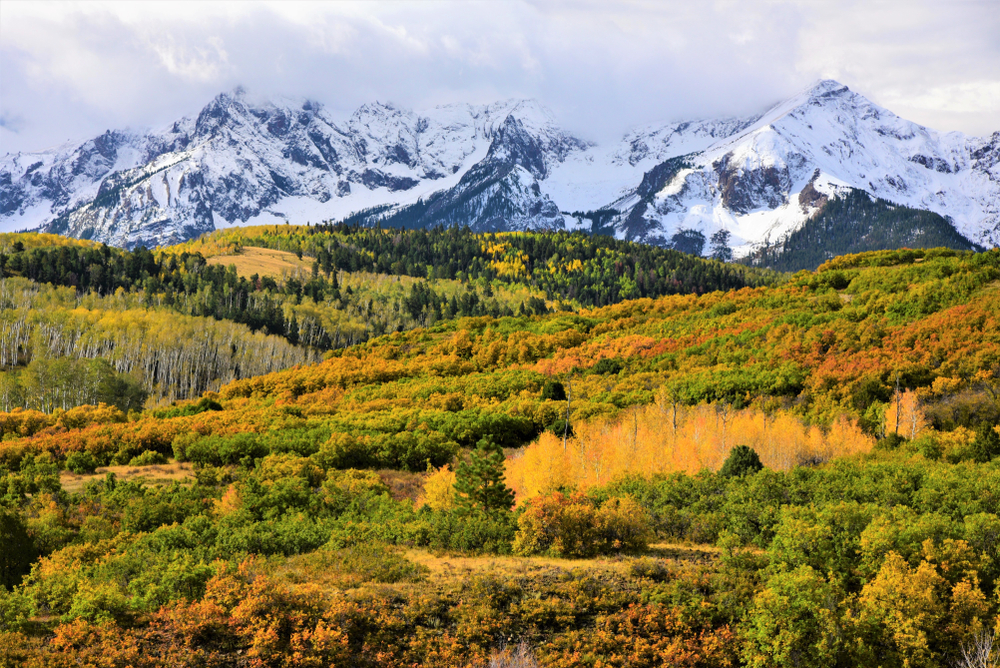
Last but not least on our list of the 30 highest mountains in North America is Uncompahgre Peak. This massive mountain is located in the San Juan Mountains of southwest Colorado.
Of the largest peaks in this region, Uncompahgre Peak is one of the easiest to ascend, relatively speaking. It’s also incredibly scenic with carpets of wildflowers dusting the mountainside as you climb.






